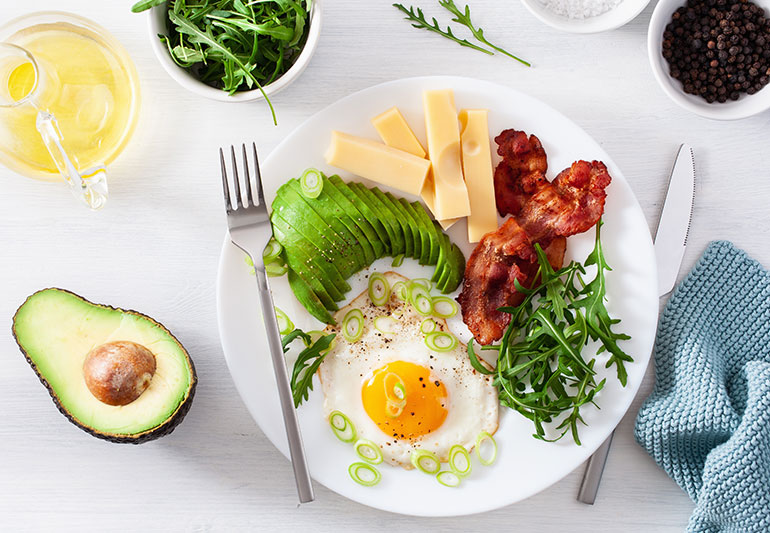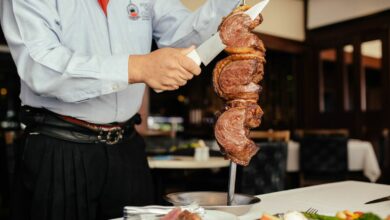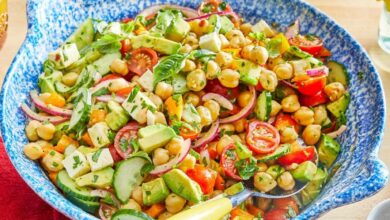Ketogenic Diet: Foods to Eat and Foods to Avoid

The ketogenic diet consists of a very low-carb, moderate-protein, high-fat diet. Although the body prefers to get its energy from carbohydrates, just 5% to 10% of energy on a strict ketogenic diet comes from these sources. The body enters a metabolic state known as ketosis when carbs are reduced. When the body enters ketosis, it begins to convert fat that has been stored into chemicals known as ketone bodies, which it can utilize as energy instead of circulating blood sugar from meals. Most cells in the body use ketone bodies as an energy source after they enter ketosis, and this process continues until you resume eating carbohydrates.
Your body becomes extraordinarily adept at burning fat for energy when this occurs. Additionally, it causes fat in the liver to be converted into ketones, which the brain can use as fuel.
Blood sugar and insulin levels can drop significantly when following a ketogenic diet. This has various health benefits in addition to the higher ketones.

Forms of Ketogenic Diet
The ketogenic diet comes in various forms, and the one you follow will determine what you consume. Among them are:
- The standard ketogenic diet (SKD) consists of a high-fat, moderate-protein, and extremely low-carb diet. Usually, it has 10% carbohydrates, 20% protein, and 70% fat.
- The cyclical ketogenic diet (CKD) alternates two days of high carbohydrate eating with five days of ketogenic eating.
- Targeted ketogenic diet (TKD): You can increase your intake of carbohydrates for your exercise.
- Similar to a conventional ketogenic diet, but with additional protein, is the high-protein ketogenic diet. Typically, the ratio is 35% protein, 5% carbohydrates, and 60% fat.
Only the conventional and high-protein ketogenic diets, meanwhile, have undergone substantial research. Bodybuilders and athletes are the main users of cyclical or targeted ketogenic diets, which are more sophisticated approaches.
It can be difficult to know what to eat on a ketogenic diet, even if you know that it consists of a very low-carb, high-fat, moderate-protein diet. This is our guide to foods that are acceptable on a ketogenic diet, foods to avoid, and foods you can have occasionally.
Foods That Fit Into a Ketogenic Diet list
This is a comprehensive list of all the low-carb foods that are suitable for keto eating.
- Seafood and fish
- Low-carb vegetables
- Avocado Cheese
- Chickens
- Eggs
- Nuts, seeds, and good fats
- Cottage cheese and plain Greek yogurt
- Berries
- Unsweetened tea and coffee
- Cocoa powder and dark chocolate
Seafood and Fish
Rich in protein and low in carbohydrates, fish is also a good source of potassium, selenium, and B vitamins. Omega-3 lipids, which are abundant in fatty fish like albacore tuna, sardines, mackerel, and salmon, have been shown to raise hemoglobin A1c levels, a test that tracks blood sugar over three months.
Low-Carb Vegetables
Non-starchy vegetables are rich in numerous nutrients, such as vitamin C and various minerals, yet low in calories and carbohydrates. Additionally, they have antioxidants that aid in defending against free radicals that can harm cells. Choose non-starchy veggies that have fewer than 8 grams of net carbohydrates per serving. Total carbohydrates less fiber equals net carbohydrates. Green beans, bell peppers, broccoli, cauliflower, zucchini, and spinach all meet the bill.
Cheese
Cheese is a great fit for the ketogenic diet because it is high in fat and low in carbs. It has a lot of calcium and protein as well.
Cottage cheese and plain Greek yogurt
Rich in calcium and high in protein are yogurt and cottage cheese. 20g of protein and around 8 grams of carbs can be found in seven ounces of plain Greek yogurt. Just over 6 g of carbs and 28 g of protein are included in eight ounces of cottage cheese.
Avocados
Pick heart-healthy fats like those found in avocados, which are rich in potassium and monounsaturated fat. Approximately half of a medium avocado has 360 milligrams of potassium or approximately 8% of your daily requirements, and around 6 g of total carbohydrates, of which 4.5 g is fiber. Plant fats, such as those found in avocados, can replace animal fats to lower triglyceride and cholesterol levels.
Meat and Chicken
As a supply of lean protein, meat is seen as essential to a ketogenic diet. Fresh meat and poultry are high in B vitamins and a variety of minerals, such as potassium, zinc, and selenium, and low in carbs. Although processed meats like sausage and bacon can be permitted on the keto diet.
Eggs
Eggs are rich in antioxidants, minerals, B vitamins, and protein. There are more than 12 g of protein and zero carbs in two large eggs. Eggs make you feel satisfied. Additionally, they include antioxidants that support the health of the eyes, like lutein and zeaxanthin.
Nuts, Seeds, and Olive oil
Nuts and seeds are excellent sources of fiber, protein, and healthful mono- and polyunsaturated fats. They have very little net carbohydrate. The two oils that are advised on the ketogenic diet are coconut oil and olive oil. Olive oil has a high oleic acid content and is linked to a decreased risk of heart disease. Though it includes a lot of saturated fat, coconut oil also has medium-chain triglycerides (MCTs), which can boost the generation of ketones. MCTs have the potential to raise metabolic rates, aid in weight loss, and reduce belly fat. When ingesting any type of healthy fat, make sure to measure your portions.
Berries
Antioxidants found in berries lower inflammation and ward off illness. They have a lot of fiber and few carbohydrates.
Unsweetened Tea and Coffee
Plain tea and coffee are acceptable on the keto diet because they have no grams of fat, carbs, or protein. Additionally, consuming two to three cups of coffee a day reduces the risk of cardiovascular disease. In addition to being lower in caffeine than coffee and packed with health benefits, tea helps lower blood pressure, and blood sugar, and potentially even prevent cancer. It also improves cognitive performance.
Cocoa powder and dark chocolate
Because of its high antioxidant content and the presence of flavanols in dark chocolate, which lower blood pressure and maintain healthy arteries, cocoa has been dubbed a “superfruit.”
Foods to Avoid While on a Keto Diet
Since the ketogenic diet is low in carbohydrates, you may need to limit the following foods that have higher carbs:
- Grains
- Sugar-filled fruits and starchy vegetables
- Yogurt with added sugar
- Drinks
- Any kind of sugar, syrup, or honey
- Crackers and chips
- Baked products, especially those without gluten
Grains
Carbohydrate-rich foods include cereal, crackers, rice, pasta, bread, and beer. Pasta made with beans and whole wheat has a lot of carbohydrates. Take into account lower-carb substitutes like shirataki noodles or spiralized veggies. Both nutritious whole-grain cereals and sugary morning cereals are heavy in carbohydrates and have to be consumed in moderation.
On a low-carb diet, beer is accepted in moderation. A better possibility includes dry wine; nonetheless, limit your intake of alcohol altogether.
High-sugar fruits and starchy vegetables
Starchy vegetables should be avoided when following a ketogenic diet since they include more easily digested carbohydrates than fiber. These consist of beets, sweet potatoes, maize, and potatoes. Reduce your intake of high-sugar fruits as well, as they contain more carbohydrates and raise your blood sugar more quickly than berries.
Yogurts with added sugar
If you want to reduce extra sugars, or carbs, stick to plain yogurt. When compared to conventional yogurt, Greek yogurt has less carbs and more protein.
Fruit Juices & Drinks
Fruit beverages, particularly those made entirely of fruit juice, are rich in quickly digesting carbohydrates that raise blood sugar levels. Stay on water.
Sugar, honey, maple syrup
Reduce your intake of sugar, honey, maple syrup, and other sugar-containing products that are heavy in carbs and low in nutrients.
Crackers and Chips
Limit your intake of processed, grain-based snack foods like chips, crackers, and other items that are heavy in carbs and poor in fiber.
Baked Goods Without Gluten
Carb-free does not equate to gluten-free. Numerous breads and muffins that are gluten-free have the same amount of carbs as regular baked items. Additionally, they usually have less fiber.









2 Comments